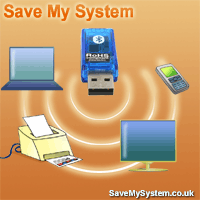This article will discuss the manufacturers of automotive GPS and what features you need to be constantly alert for before you make a purchase. By the end of this article, you should have enough information about auto GPS units to feel armed with the right knowledge and confidence.
First, a few words about the leading three manufacturers in the US.
1) Garmin has the deepest and broadest product line. Their Nuvi series is attractive for many buyers. Those devices have a lot of features packed into a sleek design that easily fits into your pocket.
2) The next biggest competitor in the US is Tom Tom thanks to their aggressive pricing campaigns. Their GO 920T was recently listed by Consumer Reports as one of the best devices to buy. Its current price is just over the $400 mark.
3) Third place is occupied by Magellan, one of the first companies to enter the automotive GPS market. Their most popular line of products is Maestro for reasons similar to Nuvi. Another great selling feature of Magellan is that they have partnered with AAA and use their tour book pre-programmed into their GPS's.
These three vendors of auto GPS units control almost 90% of the United states market to the point that anyone that has done research will see little reason to buy anything else.
Several features are worthy of consideration.
All advanced auto GPS units have touch screens, pre-loaded maps with at least the lower 48 States and a database of pre-configured destinations, also called Points of Interest (POI's).
Now here are some of the more advanced features you should consider and probably not settle without.
1) Wide, full color, glare-free screen that is at least 4.3-inches when measured across the diagonal. 2) Voice command recognition. 3) Pronunciation of street names instead of "Turn Left Here!".. 4) Advanced re-routing or the ability to enter more than one destination. 5) Bluetooth capability so that you can use the GPS hands-free while focusing on traffic and road conditions. 6) Instant traffic and weather alerts.
Extended maps, street name pronunciation, real-time weather and traffic alerts (needs subscription) amount to an extra $200. Garmin Nuvi does these very well. The wider monitor and Bluetooth can step up the price over the $400 mark. Multiple point routing costs another $50 or $100.
Other, relatively superfluous features, like 'photo album', are offered. I have outlined the ones I believe increase the value of your driving experience. In the automotive GPS marketplace, the competition under the $400 is quite fierce. Above the $400 mark, the marketplace is dominated by Garmin. I recommend you look at Garmin's 700 and 800 product lines, if you are willing to spend more.
If you are a first time buyer you may feel confused or overwhelmed. It is natural to not consider several things. An introductory article such as this can help you get prepared for the automotive GPS market, considerably better.
First, a few words about the leading three manufacturers in the US.
1) Garmin has the deepest and broadest product line. Their Nuvi series is attractive for many buyers. Those devices have a lot of features packed into a sleek design that easily fits into your pocket.
2) The next biggest competitor in the US is Tom Tom thanks to their aggressive pricing campaigns. Their GO 920T was recently listed by Consumer Reports as one of the best devices to buy. Its current price is just over the $400 mark.
3) Third place is occupied by Magellan, one of the first companies to enter the automotive GPS market. Their most popular line of products is Maestro for reasons similar to Nuvi. Another great selling feature of Magellan is that they have partnered with AAA and use their tour book pre-programmed into their GPS's.
These three vendors of auto GPS units control almost 90% of the United states market to the point that anyone that has done research will see little reason to buy anything else.
Several features are worthy of consideration.
All advanced auto GPS units have touch screens, pre-loaded maps with at least the lower 48 States and a database of pre-configured destinations, also called Points of Interest (POI's).
Now here are some of the more advanced features you should consider and probably not settle without.
1) Wide, full color, glare-free screen that is at least 4.3-inches when measured across the diagonal. 2) Voice command recognition. 3) Pronunciation of street names instead of "Turn Left Here!".. 4) Advanced re-routing or the ability to enter more than one destination. 5) Bluetooth capability so that you can use the GPS hands-free while focusing on traffic and road conditions. 6) Instant traffic and weather alerts.
Extended maps, street name pronunciation, real-time weather and traffic alerts (needs subscription) amount to an extra $200. Garmin Nuvi does these very well. The wider monitor and Bluetooth can step up the price over the $400 mark. Multiple point routing costs another $50 or $100.
Other, relatively superfluous features, like 'photo album', are offered. I have outlined the ones I believe increase the value of your driving experience. In the automotive GPS marketplace, the competition under the $400 is quite fierce. Above the $400 mark, the marketplace is dominated by Garmin. I recommend you look at Garmin's 700 and 800 product lines, if you are willing to spend more.
If you are a first time buyer you may feel confused or overwhelmed. It is natural to not consider several things. An introductory article such as this can help you get prepared for the automotive GPS market, considerably better.
About the Author:
Michael Torc is an electrical engineer, a member of Mensa and a GPS enthusiast. He recommends a visit to http://www.automotivegpscentral.com where a prospective buyer can see the top of the line GPS models and read product reviews.

No comments:
Post a Comment